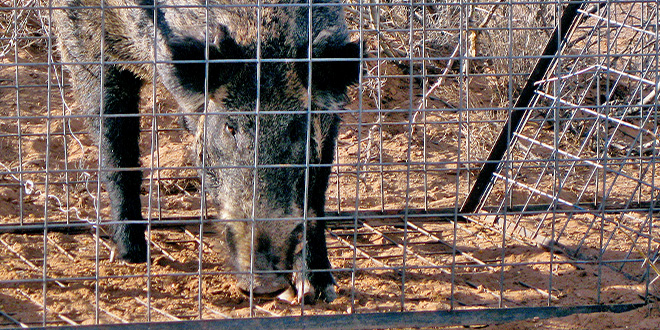Laws and additional control measures appear to have been effective in putting feral hog concerns to rest in New Mexico.
At least for the moment.
“I think we’ll always have to stay on top of it,” said Ryan McBee, regional wildlife biologist in Roswell. “They are a prolific-breeding invasive species. I would say there will always be concerns.”
But, McBee believes what could have become a difficult problem to overcome has been thwarted.
Feral hogs are destructive and carry diseases. Once in an ecosystem they are in direct competition with native wildlife for limited available resources. They are known to destroy crops, contaminate water supplies and displace wildlife.
The problem extends to the diet, which can include native frogs, lizards, snakes and birds and their eggs. The vegetation consumed by feral hogs also can also to the spread of invasive weeds.
“It was a big concern,” McBee said. “The feral hogs were beginning to spread quite a bit and they are destructive to crops and the landscape. I’ve seen them root up entire dirt roads looking for food.”
“They’re highly destructive,” said Brian Archule-ta, supervisory wildlife biologist for the U.S. Department of Agriculture’s Wildlife Services in southeastern New Mexico. “It was very import-ant to remove them. They can spread diseases and the habitat destruction has been huge.”
Although some feral hogs likely migrated from Texas to New Mexico, biologists believe the biggest influx came from the importation for hunting.
Understanding the potential dangers to wildlife and the farming and ranching communities, New Mexico State Legislature passed House Bill 594 in 2009, which was signed into law by then Gov. Bill Richardson. The law prohibits the “importation, transport within the state, hold for breeding, release or selling of live feral hogs.”
In addition, it is illegal to operate a commercial feral hog hunting enterprise.
Removal of the animals fell on the shoulders of Wildlife Services, whose mission is to pro-vide leadership and expertise to resolve wildlife conflicts.
 New Mexico Wildlife magazine Conserving New Mexico's Wildlife for Future Generations
New Mexico Wildlife magazine Conserving New Mexico's Wildlife for Future Generations
